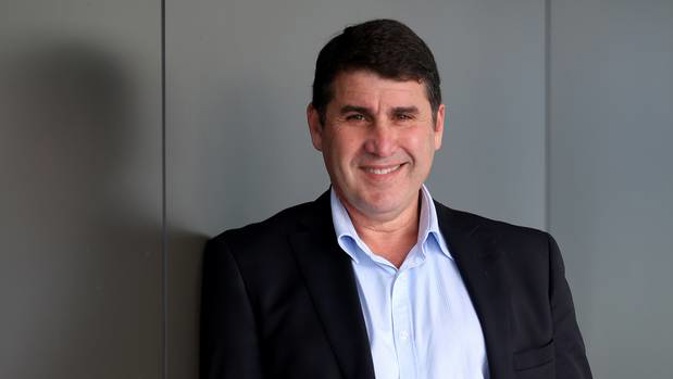
Outgoing health boss Lester Levy says the government had all the information it needed about the poor state of Middlemore Hospital, and the rest of the health system. But then, he would say that, writes Simon Wilson.
"Yes," said Lester Levy, "I do have some things I want to say."
Levy is the just-departed chair of the Counties-Manukau District Health Board. When former health minister Jonathan Coleman told the Herald last week that he knew "absolutely nothing" about the state of the buildings at Middlemore Hospital, he was declaring, in effect, that Levy had not told him anything.
But the way Levy tells it, the minister has no grounds to make that claim.
Levy is a powerful person in Auckland, and a controversial one. He's just finished up as chair of all three district health boards (the other two are Auckland and Waitemata, which covers the west and the North Shore) and is also chair of Auckland Transport (see side story).
The Weekend Herald sat down with Levy this week for an exclusive interview. We drank tea, He talked quietly, expansively, bluntly. He was proud of what he's done and frustrated by the things he said he hadn't been able to do, and he didn't mind who knew it.
At Middlemore Hospital, I said, there's mould in the walls and possibly leaking sewage too. Let's start with that.
"Let me explain," he said. "Leaky buildings are very difficult. You might not discover a problem for while, and when you do you don't know how extensive it is. The problems overlap, it's not just the cladding and the mould, there might be asbestos, and seismic weakness, problems with the power supply. And you can't just close a building, you know, or fix it. You have to rehouse the patients and services in that building first. They have their own specialist needs.
"Let me tell you," he said, "in 2016, Jonathan Coleman himself asked the four northern health boards [the Auckland three and Northland] to set up a joint Long-term Investment Plan."
That LTIP looked at everything. "We built up a comprehensive picture working from a clinical services model," said Levy. He called it "the best piece of collaborative work in the region".
There were three strands. The first was remediation: the LTIP identified the infrastructure that needed to be fixed.
/arc-anglerfish-syd-prod-nzme.s3.amazonaws.com/public/ZU3R2LCYSRCC7F6EA2KTY2NQWM.jpg)
Middlemore Hospital. Photo / Doug Sherring
The second was to identify everything that was "not fit for purpose". Buildings and key equipment that might be in poor shape, or no longer relevant to the work.
Third, they looked at the new capacity needed to deal with population growth.
The boards worked on the LTIP with Treasury and the Ministry of Health. When they presented it last November Levy says they were "highly commended" for the quality of the work.
He called it "the best piece of work I've ever seen around capital expenditure". And, he said, it contained "all the issues now being talked about that face the Counties DHB".
But the LTIP report did not go directly to the minister. Instead, it went to the Capital Investment Committee (CIC), a body charged with advising the minister on spending priorities. CIC members are drawn from the public health sector and private commerce; its chair is Evan Davies, boss of Todd Property and former boss of Sky City Entertainment Group.
Levy said he did not know what happened to the report. But he does know the CIC works very slowly. It's not a problem limited to healthcare; he sees the same in transport. He painted a picture of high-powered committees, set up to help government spend tax dollars efficiently, that slow everything down and bury urgent proposals in a bureaucratic mire.
The LTIP is not publicly available. Levy said he didn't know why. "But," he added, "that plan clearly identified in 2016 problems with all the buildings being talked about now."
Was he saying the minister should have known?
"I'm not saying that."
He explained he preferred "not to look like I'm bagging ministers".
But was he saying the information was clear in that report?
"Yes I am."
Levy tried to ask Coleman about the slow pace of the CIC at a Parliamentary select committee meeting in February this year, but he says Coleman cut him off and changed the subject.
I asked Coleman about that and he said it wasn't really true. Then he talked about whether he had known about the condition of the Middlemore buildings. "Look, there is a real difference between the general question of managing buildings that are getting old and the sudden revelation of specific problems."
Nobody knew, he said, and that was clear from recent meetings of the DHB's audit and risk committee and the board itself. "The people working there didn't know, the administrators, the board, I didn't know and [Labour's health minister] David Clark didn't know."
Strangely, in all this, the DHBs have often underspent their capital expenditure budgets. I asked Levy about that and he said, "Projects don't always proceed as expected." A lot of that was due to the slow pace of the CIC. "You budget to do something, you think you've got approval, and at the last minute they ask for another report. It happens a lot."
Levy said that eight years ago health governance was "not that hard", but it was "incredibly hard" now. He wrote to Coleman about operating expenditure last winter. "I was very worried about people's access to the care they needed, and about safety in the hospitals, and about the pressure on staff. I can't remember the exact words I used but what I told him was that I could not remember a time when I was so concerned."
/arc-anglerfish-syd-prod-nzme.s3.amazonaws.com/public/VVDAIOP64FGDDCNYXQFS34T5TI.jpg)
Former Health Minister Jonathan Coleman. Photo / Mark Mitchell
I put that to Coleman, who told me, "Oh look, I had lots of conversations with Lester Levy. I can't recall a letter but there is no question that what he was telling me was fed into the planning."
As we talked, Levy raised other reports. He showed me the DHB's Statement of Performance Expectations, for example, drawn up last year, which contains line items that identify the spending needed on every one of the Middlemore buildings now in the spotlight.
Levy's argument is that they went blue in the face trying to persuade the government it was endangering patients and staff with underfunded healthcare. Coleman's argument is that nobody said, in simple direct language, that this specific problem or that one was acute.
They're probably both right. The DHB didn't know how to get the message through. Critics of the minister say he didn't want to hear the message anyway, but he disputes that hotly. Clearly, though, he didn't know how to hear it. This is no way to run a health system.
As for Levy who, in his own telling, could not make himself heard, he's done his statutory nine years on district health boards and no longer sits on any of them. He has, instead, been appointed to a new advisory committee on health, helping the government set a strong health agenda. Is it his chance to make good?
"Frankly, we expected we would be appointing a woman"
Lester Levy on his other role: chair of Auckland Transport
Auckland Transport is disestablishing the positions of three of its top managers, restructuring the way it operates, and creating four new executive roles.
Lester Levy, who chairs the AT board in addition to the health roles he has recently held, says a big "culture change" is coming.
"We appointed a new CEO at the end of last year," he told me, "and we gave him a mandate to change things. You're going to see the results of that in the next few weeks."
They've started already. The new boss, Shane Ellison, who is four months into the job, advised staff by internal memo on Wednesday of the changes to the executive structure.
In that memo, which the Weekend Herald has a copy of, he said the four new executive roles would cover "safety and road safety, customer experience, organisational transformation and end-to-end journeys".
Ellison told staff, "I want AT to be positioned to deliver safer journeys and be more customer-centric. We need to better understand and meet the needs of our customers and be a part of the transformation of Auckland."
It's not clear yet which three executive positions will go.
Levy told me, "We want to love the customer. We want flexibility, we're a technology-based company and we've got a lot of work to do."
The former CEO, now retired, was engineer David Warburton. Levy said they didn't want to replace like with like.
"We set some criteria that might have surprised some people. We said we did not want an engineer. We did not want a project manager, we did not want a planner. And we didn't want someone who was old."
What's not old? I asked.
"Preferably under 45."
And, he added, there was one more criterion. "They should not have an ego. Frankly, we expected we would be appointing a woman."
They didn't choose a woman. Shane Ellison is a 45-year-old expat whose key experience has been in Australia, running public transport systems for the giant French company TransDev.
Levy believes Auckland's transport planning currently has "a greater alignment than we have ever seen". He means Auckland Transport, the Auckland Council, the NZ Transport Agency, the Ministry of Transport and the government itself all largely share the same goals.
Those goals revolve around making it worthwhile for as many people as possible to leave the car at home, by providing much better public transport and active transport (walking and cycling).
I suggested to Levy that the biggest challenge facing AT is selling the message. AT has had a poor record of communicating with locals about street changes, managing their concerns about disruption and winning wide public support.
He agreed. He said part of the problem was that the people talking to communities did not have authority to commit to very much. Communications staff were ignored by contractors and engineers.
"We have been project dominated," he said, "and we've seen ourselves as an engineering organisation. Now we want to be customer-focused."
Such easy words. Will they become more than empty slogans? There are 1000 people working at AT, most of them used to doing things the old way. Levy himself said not everyone in the senior levels at AT was on board with the new approach.
"Of course there are some differences. Transport is a contested domain." Presumably, that's why they're starting at the top.
Levy added one other thing, in parting. "I have argued for a long time, inside Auckland Transport and with Wellington, for lower fares. I've never got anywhere. Maybe that will change now."
Take your Radio, Podcasts and Music with you









